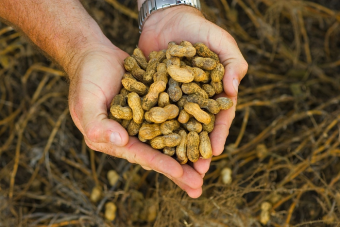
Two of the fats among the most recommended by health buffs are peanut oil and olive oil. Let’s check ‘em out to see what the chemistry is for each of these oils, what their reputed health benefits are, and how they perform in their cooking assignment. Yes, let’s compare individual substances found within peanut oil and olive oil.
Peanut Oil Components
There are three major components of peanut oil – triglycerides of oleic, linoleic, and palmitic acids. A triglyceride is the combining of three fatty acid molecules with one molecule of glycerin. Approximate percentages are:
48% Monounsaturated [Oleic Acid]
34% Polyunsaturated [Linoleic Acid]
18% Saturated [Palmitic Acid]
Oleic acid is an unsaturated, 9-omega, cis-fatty acid. Linoleic acid is an unsaturated 6-omega, cis, cis-fatty acid. Palmitic acid is saturated. In the past, saturated fatty acids received an inappropriately bad reputation. It is now recognized the worst fatty acids are trans-fatty acids. These are to be viewed as taboo in any healthy diet.
Olive Oil Components
The chemistry of olive oil isn’t all that different from peanut oil. It contains oleic acid and linoleic acid, though in different percentages, along with traces of similar acids. The saturated palmitic acid is joined by a small amount of stearic acid. Approximate percentages are:
71% Monounsaturated [Oleic Acid + Palmitoleic Acid]
15% Polyunsaturated [Linoleic Acid + α-Linoleic Acid]
14% Saturated [Palmitic Acid + Stearic Acid]
Peanut Oil and Olive Oil
As can be seen from the data above, the primary difference between peanut oil and olive oil are the relative percentages of monounsaturated fatty acids and the relative percentages of polyunsaturated fatty acids. At one time, omega-6 fatty acids such as linoleic, were considered bad for artery health (α-linoleic acid is an omega-3 acid). Such concerns, it is now suggested, can be put aside.
Of greater importance today might be the optimal temperature (below the smoke point) at which each oil is best used. Peanut oil can be used at a much higher fry temperature.
Note: You might also enjoy What is Canola Oil? Does It Pose a Health Risk?
References: